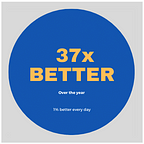The New and Improved Riskometer: A little-used yet most valuable mutual fund tool
Riskometer was reborn in 2021.
Yet people continue to treat it with disdain.
Riskometer: The Journey
2015: SEBI introduced Riskometer as an easy-to-understand risk indicator for retail investors. Funds were classified under five risk buckets: Low, Moderately Low, Moderate, Moderately High, and High.
However, the approach was flawed:
- Instead of the fund, the Riskometer indicated the risk level of the fund category. Despite differences in the underlying portfolio, all funds in a category had the same risk rating.
- The Riskometer was static. The changes in the underlying portfolio had no impact on the fund’s risk category.
The new & improved Riskometer
2021: SEBI introduced a new framework for assigning risk grades to the individual funds based on their portfolio. The new Riskometer has the following advantages:
- A new risk bucket called “Very High” has been added.
- The risk bucket of a fund is assessed by taking the average of the risk values of the individual instruments in its portfolio. The risk value of the instruments is based on several factors. These factors are credit risk, interest rate risk, and liquidity risk for debt funds.
- The new Riskometer is updated monthly.
A few observations
- The Riskometer is still useless for equity funds. At present, all equity funds are classified as “Very High” risk. SEBI needs to tweak the algorithm to make the assessment more meaningful.
- However, for debt funds, Riskometer is an indispensable tool. As of 18–01–2022, this is the Riskometer breakup of the Ultra Short Duration Funds:
Number of funds: 35
Low: 1
Low to Moderate: 20
Moderate: 11
Very High: 3
(Source: https://www.valueresearchonline.com/).
- We think that all Ultra Short Duration Funds are low-risk funds. But the Riskometer shows that this is not always true.
How to use the Riskometer
- The Riskometer, not the fund’s category, is the true measure of the funds risk profile. When selecting a debt fund, use the Riskometer as an input.
- Regularly review the Riskometer category of the debt funds in your portfolio. If you notice any changes, investigate further.
This post was created with Typeshare
